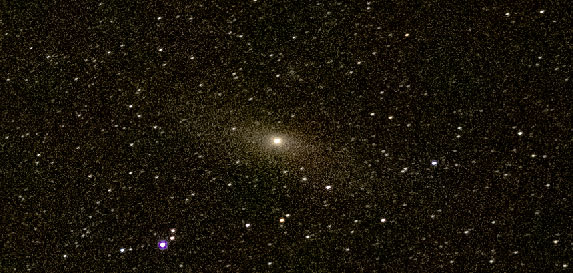
Andromeda Galaxy (M31) - The Andromeda Galaxy was first observed through a telescope by Simon Marius on the 15th December 1612. He described it as 'looking like the glow of a candle seen though horn' - a good description of the view through modern binoculars as well. It is worth noting that because of dust obscuration we cannot see the center of our own galaxy, but even binoculars are enough to allow us to peer into the nucleus of Andromeda!

NASA have predicted that in four billion years our galaxy will collide with M31 and that two billion years later the galaxies will have merged to form a single new elliptical galaxy. Our solar system is expected to survive this process!
Triangulum Galaxy (M33) - Nearly 1/2 a degree across, but faint, needing really clear, dark skies. Visible in the same binocular field as Alpha Trianguli. NASA have predicted that eventually the Triangulum Galaxy will merge with the Milky Way and Andromeda Galaxies to produce one huge object.
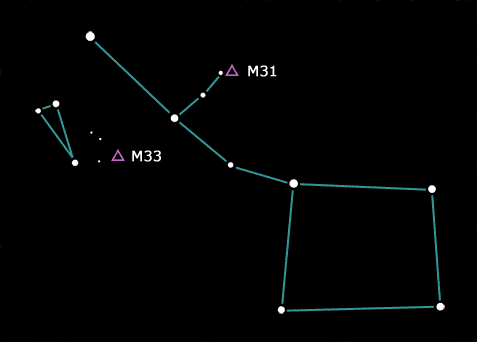
Garnet Star - Red supergiant star, one of the largest stars in our galaxy. Coming to the end of its life cycle and may well go supernova in the next few million years, now fusing helium into carbon.
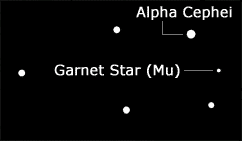
Galaxy M77 - "Light from the time of the Dinosaurs". M77 is probably the most distant object visible in binoculars. In 12x42s the galaxy looks exactly like just another small star, very dim, only visible with averted vision.


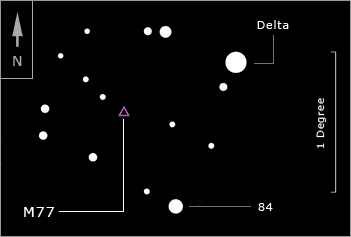
Open Cluster M35 - Easy to resolve many of its suns in binoculars. According to John Herschel (1833) "A large, coarse, pretty rich cluster of stars"
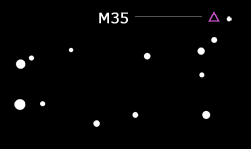
Globular Cluster M15 - M15 is believed to be more than 30,000 light years distant from the earth, and is 12 billion years old, nearly as old as the universe!
Globular Cluster M2 - Globular Cluster in Aquarius. Roughly 50,000 light years away from us.
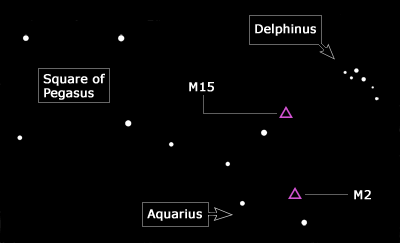
Stellar Association Melotte 20 - Alpha Persei Cluster.
Sword Handle - Double Cluster in Perseus. It is thought that the two clusters may perhaps have formed from the same now vanished cloud of interstellar dust, and now share its motion and direction through the galaxy. Click here for a photo of the cluster with Cassiopeia.
Open Cluster M34 - "A grand target for binoculars" according to Harrington.
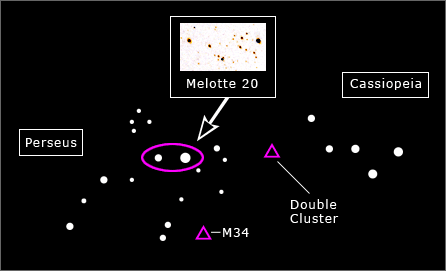
Fomalhaut - Beautiiful white star visible alone far to the south from the latitude of autumnal London. According to the oneminuteastronomer.com site "astronomers have determined Fomalhaut is physically associated with Vega and the star Castor in Gemini. These stars are part of the Castor Moving Group, which may have originated in the same star cluster and now move through space together".
